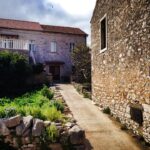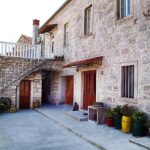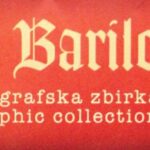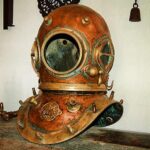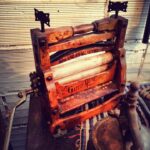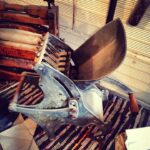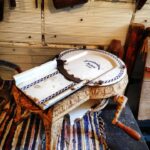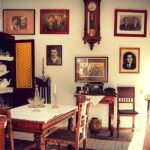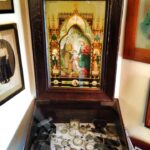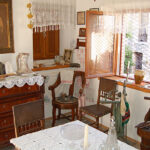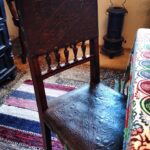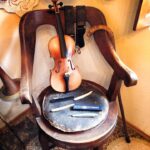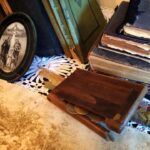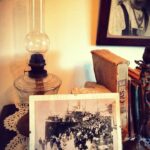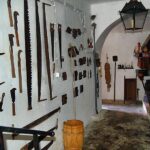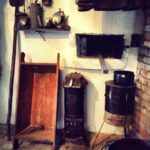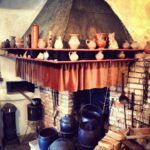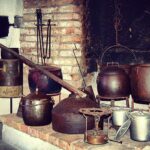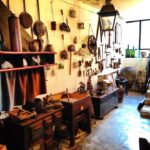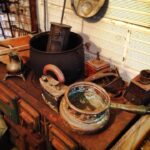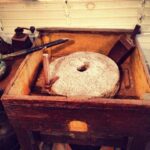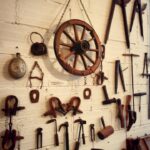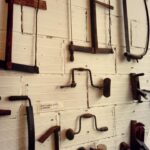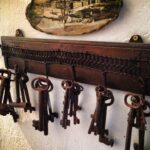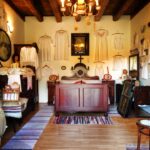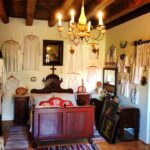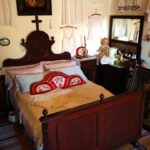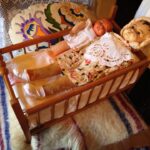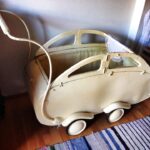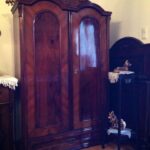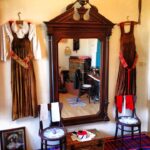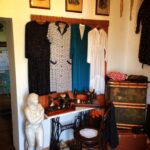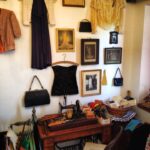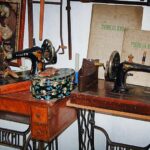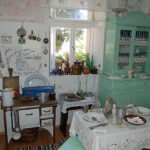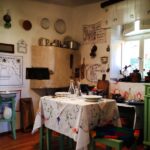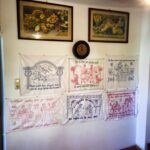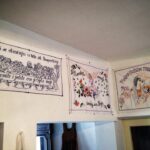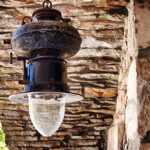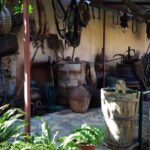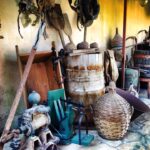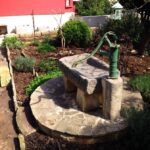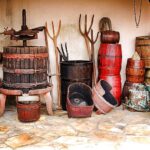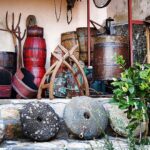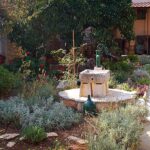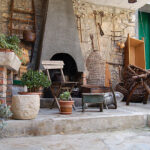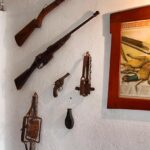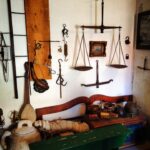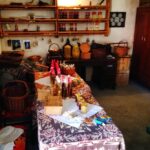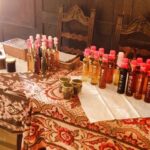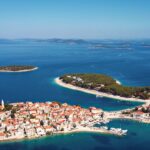As I mentioned in my first post, on these pages we are going to write, among other things of course, about traveling. And I’m not pointing out this because we discovered a topic never before seen in the history of writing, but because in this post we are going to take you on a different kind of a journey, that Holy Grail of travels – the time traveling! Did I say time traveling? Well, I guess I did and no, I am not joking! So, are you ready for Korcula’s first and the most charming time machine?! All you need is the address of its location, a little bit of money to pay for your trip through time and that great thing we all have – imagination! 😉 Interested? Those of you who are not are excused, rest of you buckle up and get ready to go!
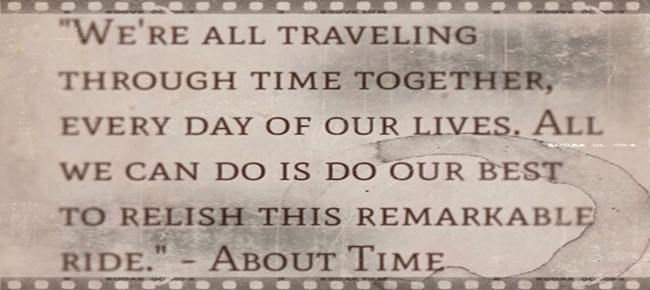 Somewhere in the middle of the island of Korcula there is this large and fertile valley, surrounded by numerous little hills and intersected with the different colors of countless cultivated fields. Somewhere in the middle of that valley you will find this lovely and picturesque Mediterranean town named Blato and somewhere in that town you will find this typical Mediterranean stone house, seemingly not that much different than the other homes in Blato. But inside of that very house, on the number 10 of the 90th Street, is exactly where our time machine awaits us and its owners named it – Barilo!
Somewhere in the middle of the island of Korcula there is this large and fertile valley, surrounded by numerous little hills and intersected with the different colors of countless cultivated fields. Somewhere in the middle of that valley you will find this lovely and picturesque Mediterranean town named Blato and somewhere in that town you will find this typical Mediterranean stone house, seemingly not that much different than the other homes in Blato. But inside of that very house, on the number 10 of the 90th Street, is exactly where our time machine awaits us and its owners named it – Barilo!
Those of you in love with the science fiction may feel a bit disappointed (but lets face it, you haven’t really thought I was talking about actual time machine, right?) when I say that Barilo is in fact an ethnographic collection – an abundant collection of countless objects and things dating from centuries (even millennia) ago, carefully selected and thematically arranged throughout the rooms of the house I mentioned, representing particular rooms that existed in the homes of our ancestors. And the idea is absolutely brilliant – as soon as you step inside, you can almost feel like you are being sent back through time in some different era, surrounded by all those strange looking items from the past that you have never seen before or maybe saw them just on TV or you have heard about them, but never got the chance to see them in person.
Every visit to this unusual and unique family museum is accompanied by your host or a guide (usually one of the owners) that takes you on a planned tour around the household, explaining everything about a particular room and the associated items and also answering all of your potential questions.
The household itself is divided into inner and outer exhibition area and the tour starts with the sitting room (locally called “tinel”), followed by a room that locals call “komin” (this time I really don’t know what would be the adequate word in English, but the closest one would be hearth – this is a room with a fireplace where the people used to prepare some of their food, keep different tools and machines and store olive oil, smoked fish or ham, etc.), then master bedroom, kitchen (that was also used as a dining area), dressing/sewing room and finishing in the outer part of the house with a large garden which is also quite interesting because of the numerous indigenous ornamental plants and aromatic/medicinal herbs also presented and described by your guide. As for the items arranged in these rooms, there are almost 600 of them in their collection, meticulously gathered throughout the decades and with the diversity that is more than remarkable.
Your trip through time will finish with a delightful surprise (SPOILER ALERT!), in a room that is not a part of the formal exhibition, but also not any less interesting or fulfilling. This is a room with just several items, but instead a place where your hosts will treat you with some of their excellent home made products that were prepared according to the old and traditional recipes, also available for purchase if you find them tasty. And believe me – you will! There are many different types of marmalades and jams, traditional sweets and pastries and of course, a great selection of delicious home made “rakija”. Ok, pause on the main story, I have a little side story for you and with absolutely no charge at all! And no, you don’t even need to call any number and order anything in next 30 minutes or less! 😛 (I know there are bunch of you out there who just can’t stand those annoying TV commercials and who will get this little joke) Anyway, what is this “rakija” thing that so many of us like? Well, rakija is an alcoholic beverage, similar to brandy or vodka, very popular in the parts of Eastern Europe and it is considered as a national drink of many Slavic nations. It is made by distilling fermented fruits so the final product can come in many different varieties, but the best known are “sljivovica” (made out of plums and pronounced: shlee-wo-witza) and “lozovaca” (made out of grapes and pronounced: lo-zo-watcha). Besides being made out of all kinds of fruits, rakija can also be mixed with different herbs, honey, mistletoe or walnuts after distillation, so when I said “a great selection”, I really meant it – there are many different flavors and types you can taste or purchase which I would strongly recommend since it is made out of local and high quality products and it is also believed that some sorts of rakija can have medicinal properties. Feel free to ask your hosts anything you would like to know about these great home made products, I’m sure they will gladly explain everything and further present their goods to you.
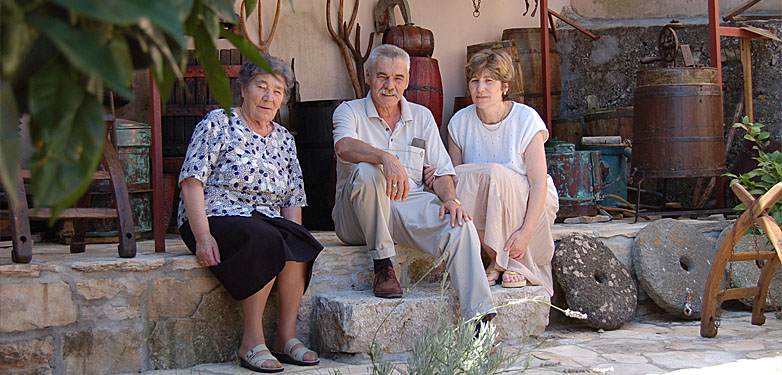
And for the conclusion let me say a few words about the warm hearted and kind owners: family Marinovic-Barilo has lived in this region for centuries in the same house (which experienced some modifications throughout time, but still resides on its original foundations) I mentioned before so a walk through this family museum represents a walk through centuries of lives of the islanders, but also the family whose descendants still live here and will be the friendly hosts on your journey. Like many families in Blato, this one also has its own specific nickname – Barilo. Barilo is actually a traditional wooden container, which was made for the salting and storing fish and since their ancestors made these containers, they earned this nickname that today proudly carries the name of this great collection which even has the status of cultural property and as such has entered the Register of Croatian cultural heritage, adding it to the List of protected cultural heritage.
That’s it, we’re done here, beam us back Scotty! 😀
And you dear reader, have a great day… 🙂
Powered by CINTRO.com

